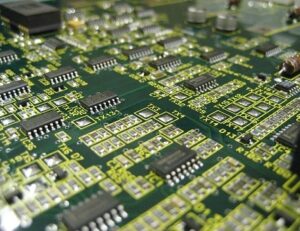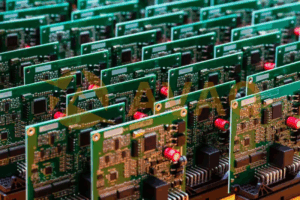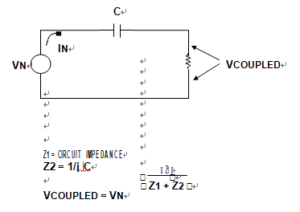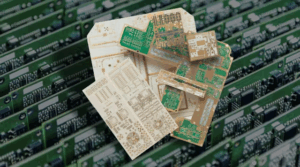In many industrial and scientific applications, thermocouple interface circuit boards play a critical role in accurately measuring temperature under harsh and dynamic conditions. These printed circuit boards (PCBs) are specifically designed to amplify, filter, and condition the delicate signals generated by thermocouples, ensuring precise data acquisition and control. As technology evolves, the demand for thermocouple interface circuit board reverse engineering has grown, especially when original designs are obsolete or when modifications are needed to fit new systems.

En muchas aplicaciones industriales y científicas, las placas de circuitos de interfaz de termopar desempeñan un papel fundamental en la medición precisa de la temperatura en condiciones adversas y dinámicas. Estas placas de circuitos impresos (PCB) están diseñadas específicamente para amplificar, filtrar y acondicionar las delicadas señales generadas por los termopares, garantizando la adquisición y el control precisos de datos. A medida que la tecnología evoluciona, la demanda de ingeniería inversa de placas de circuitos de interfaz de termopar ha aumentado, especialmente cuando los diseños originales quedan obsoletos o cuando se requieren modificaciones para adaptarse a nuevos sistemas.
Unique Features of Thermocouple Interface Circuit Boards
Unlike standard electronic circuit boards, a thermocouple interface PCB must handle extremely low-voltage signals — sometimes in the range of microvolts. To maintain accuracy, the board typically includes:
-
Precision amplification circuits to boost weak signals without introducing noise.
-
Cold-junction compensation to correct temperature measurement errors caused by ambient conditions.
-
High-resolution analog-to-digital converters (ADC) for fine measurement granularity.
-
Isolation circuits to protect sensitive measurement electronics from industrial noise and ground loops.
Furthermore, these boards often integrate industrial communication protocols such as Modbus, 4-20 mA current loops, or Ethernet for seamless integration with control systems.
The layout drawing and PCB design must be optimized for low noise, stable ground planes, and proper shielding, making Gerber files, schematic diagrams, and BOM lists highly detailed and sophisticated compared to ordinary sensor interface boards.
Capacitive Noise in Thermocouple Interface Circuit Board Reverse Engineering is an inevitable subject, it is evident that the noise voltage, VCOUPLED appearing across Z1, may be reduced by several means, all of which reduce noise current in Z1.

Во многих промышленных и научных приложениях платы интерфейса термопары играют важную роль в точном измерении температуры в жестких и динамических условиях. Эти печатные платы (ПП) специально разработаны для усиления, фильтрации и обработки деликатных сигналов, генерируемых термопарами, обеспечивая точный сбор и управление данными. По мере развития технологий растет спрос на обратную разработку плат интерфейса термопары, особенно когда исходные конструкции устарели или когда требуются модификации для установки новых систем.
There is a capacitance between any two conductors separated by a dielectric (air or vacuum are dielectrics). If there is a change of voltage on one, there will be a movement of charge on the other. A basic model for this is shown in below Figure.

Capacitive Coupling Equivalent Circuit Model
They are reduction of the signal voltage VN, reduction of the frequency involved, reduction of the capacitance, or reduction of Z1 itself. Unfortunately however, often none of these circuit parameters can be freely changed, and an alternate method is needed to minimize the interference.
The best solution towards reducing the noise coupling effect of C is to insert a grounded conductor, also known as a Faraday shield, between the noise source and the affected circuit by PCB Reverse Engineering. This has the desirable effect of reducing Z1 noise current, thus reducing VCOUPLED.

कई औद्योगिक और वैज्ञानिक अनुप्रयोगों में, थर्मोकपल इंटरफ़ेस सर्किट बोर्ड कठोर और गतिशील परिस्थितियों में तापमान को सटीक रूप से मापने में महत्वपूर्ण भूमिका निभाते हैं। ये प्रिंटेड सर्किट बोर्ड (PCB) विशेष रूप से थर्मोकपल द्वारा उत्पन्न नाजुक संकेतों को बढ़ाने, फ़िल्टर करने और कंडीशन करने के लिए डिज़ाइन किए गए हैं, जिससे सटीक डेटा अधिग्रहण और नियंत्रण सुनिश्चित होता है। जैसे-जैसे तकनीक विकसित होती है, थर्मोकपल इंटरफ़ेस सर्किट बोर्ड रिवर्स इंजीनियरिंग की मांग बढ़ी है, खासकर जब मूल डिज़ाइन अप्रचलित हो जाते हैं या जब नए सिस्टम को फिट करने के लिए संशोधनों की आवश्यकता होती है।
A Faraday shield model is shown by below Figure. In the left picture, the function of the shield is noted by how it effectively divides the coupling capacitance, C. In the right picture the net effect on the coupled voltage across Z1 is shown. Although the noise current IN still flows in the shield, most of it is now diverted away from Z1. As a result, the coupled noise voltage VCOUPLED across Z1 is reduced.

An Operational Model of a Faraday Shield






